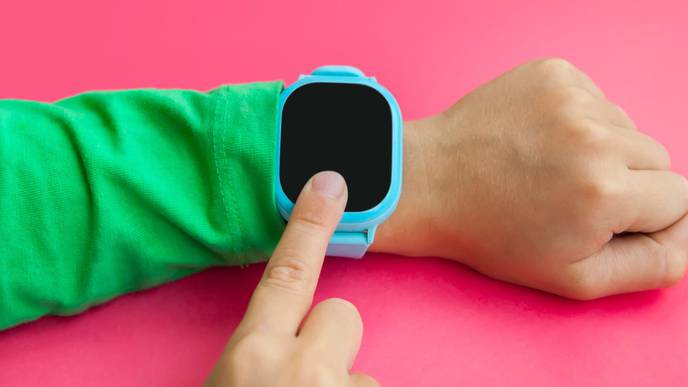Smartwatches Can Pick up Abnormal Heart Rhythms in Kids, Stanford Medicine Study Finds

12/15/2023
The second challenge is that even a few weeks of continuous monitoring may not capture the heart’s erratic behavior, as children experience arrythmias unpredictably. Kids may go months between episodes, making it tricky for their doctors to determine what’s going on.
Connor Heinz and his family faced both challenges when he experienced periods of a racing heartbeat starting at age 12: An adhesive monitor was too irritating, and he was having irregular heart rhythms only once every few months. Ceresnak thought he knew what was causing the racing rhythms, but he wanted confirmation. He suggested that Connor and his mom, Amy Heinz, could try using Amy’s smartwatch to record the rhythm the next time Connor’s heart began racing.
Using smartwatches for measuring children’s heart rhythms is limited by the fact that existing smartwatch algorithms that detect heart problems have not been optimized for kids. Children have faster heartbeats than adults; they also tend to experience different types of abnormal rhythms than do adults who have cardiac arrythmias.
The paper showed that the smartwatches appear to help detect arrhythmias in kids, suggesting that it would be useful to design versions of the smartwatch algorithms based on real-world heart rhythm data from children.
Evaluating medical records
The researchers searched patients’ electronic medical records from 2018 to 2022 for the phrase “Apple Watch,” then checked to see which patients with this phrase in their records had submitted smartwatch data and received a diagnosis of a cardiac arrythmia.
Data from watches included alerts about patients’ heart rates and patient-initiated electrocardiograms, or ECGs, from an app that uses the electrical sensors in the watch. When patients activate the app, the ECG function records the heart’s electrical signals; physicians can use this pattern of electrical pulses to diagnose different types of heart problems.
From 145 mentions of the smartwatch in patient records, 41 patients had arrythmias confirmed. Of these, 18 patients had collected an ECG with their watches, and 23 patients had received a notification from the watch about a high heart rate.
The information from the smartwatches prompted the children’s physicians to conduct medical workups, from which 29 children received new arrythmia diagnoses. In 10 patients, the smartwatch diagnosed arrythmias that traditional monitoring methods never picked up.
One of those patients was Connor Heinz.
“At a basketball tryout, he had another episode,” Amy Heinz recalled. “I put the watch on him and emailed a bunch of captures [of his heartbeat] to Dr. Ceresnak.” The information from the watch confirmed Ceresnak’s suspicion that Connor had supraventricular tachycardia.
Most children with arrythmias had the same condition as Connor, a pattern of racing heartbeats originating in the heart’s upper chambers.
“These irregular heartbeats are not life-threatening, but they make kids feel terrible,” Ceresnak said. “They can be a problem and they’re scary, and if wearable devices can help us get to the bottom of what this arrythmia is, that’s super helpful.”
In the future, I think this technology may help us rule out anything serious.
In many cases of supraventricular tachycardia, the abnormal heart rhythm is caused by a small short-circuit in the heart’s electrical circuitry. The problem can often be cured by a medical procedure called catheter ablation that destroys a small, precisely targeted region of heart cells causing the short circuit.
Now 15, Connor has been successfully treated with catheter ablation and is playing basketball for his high school team in Menlo Park, California.
The study also found smartwatch use noted in the medical records of 73 patients who did not ultimately receive diagnoses of arrythmias.
“A lot of kids have palpitations, a feeling of funny heartbeats, but the vast majority don’t have medically significant arrythmias,” Ceresnak said. “In the future, I think this technology may help us rule out anything serious.”
A new study
The Stanford Medicine research team plans to conduct a study to further assess the utility of the Apple Watch for detecting children’s heart problems. The study will measure whether, in kids, heart rate and heart rhythm measurements from the watches match measurements from standard diagnostic devices.
The study is open only to children who are already cardiology patients at Stanford Medicine Children’s Health.
“The wearable market is exploding, and our kids are going to use them,” Ceresnak said. “We want to make sure the data we get from these devices is reliable and accurate for children. Down the road, we’d love to help develop pediatric-specific algorithms for monitoring heart rhythm.”
The study was conducted without external funding. Apple was not involved in the work. Apple’s Investigator Support Program has agreed to donate watches for the next phase of the research.
Apple’s Irregular Rhythm Notification and ECG app are cleared by the Food and Drug Administration for use by people 22 years of age or older. The high heart rate notification is available only to users 13 years of age or older.

Facebook Comments